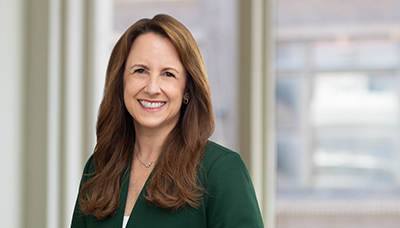On March 4-6, the American Bar Association hosted its annual White Collar Crime conference in New Orleans. As we did in 2014 (here and here), today and Wednesday we will feature our “Top Ten” takeaways from the conference for individuals, companies and white collar practitioners as compiled by our partners in attendance.
- Beware any false sense of security from a civil regulatory settlement
There was much discussion at the conference about the interplay between civil regulatory settlements and follow-up criminal investigations and charges. It is clear from recent trends that settling an investigation on the civil side – especially if settled with admissions – will not ward off a criminal investigation and may in fact facilitate one. Defense attorneys agreed that they are avoiding taking clients in to give statements in regulatory matters for fear it will be used against them in later actions, even where such a result was unintended by the civil regulator. To block criminal authorities from getting a full investigative file from regulatory authorities, attorneys were advised to ensure that the civil settlement provides for a release of any and all litigation hold obligations, return of client documents from agency, no admissions, and no statements to regulatory investigators as part of cooperation agreement.
- Sentencing reform for economic crimes is (hopefully) in the making
The conference’s panel on sentencing included several members of the ABS CJS Task Force on the Reform of Federal Sentencing for Economic Crimes that will be considered by the US Sentencing Commission. The panelists explained some of the major themes in the recommended changes, including, among other things, a “culpability” rating to more accurately reflect the severity of the offense in lieu of using certain existing criteria. The panel commented that the recommended changes will include eliminating or changing the existing reliance on criteria including loss amount and number of victims in favor of more relevant proportionate criteria such as gain to the perpetrator, victim impact, and degree of sophistication of the organization (if any) participating in the crime. The final report can be found
here.
- EPA pursuing national enforcement initiatives through 2016
A panel on environmental enforcement revealed some ongoing EPA initiatives, and provided some clarity on EPA investigative trends and priorities. Some EPA initiatives through 2016 include reducing air pollution from the largest sources; cutting hazardous air pollutants; ensuring energy extraction activities comply with environmental laws; reducing pollution from mineral processing operations; keeping raw sewage and contaminated storm water out of the nation’s waters; and preventing animal waste from contaminating surface and ground water. Attorneys practicing in the area of EPA enforcement noted a target company that blames low-level employees may be more likely to see a criminal investigation opened; that EPA is concerned that pipeline issues are increasing due to decaying infrastructure which poses a risk of significant disasters; and, perhaps unsurprisingly, that cooperation can make a huge difference in the outcome of an investigation.
- DOJ provides FCPA enforcement update, emphasizing financial implications of cooperation in 2014 cases
Patrick Stokes, the head of the DOJ’s FCPA unit, again participated in the conference’s panel on FCPA developments and enforcement priorities. Stokes spent a significant amount of time presenting a statistical, Guidelines-based case for the DOJ’s assertion that self-reporting and cooperation can and in most cases will reduce the financial penalties a company will incur. He used the Marubeni, Avon, and Alstom cases as examples, and emphasized that while no two cases are the same, the DOJ tends to apply the Guidelines consistently to determine penalty ranges, and that the more a company cooperates, the more likely it will be that the DOJ will offer the company up to a 30% reduction off of the low end of the Guidelines range.
- The FBI is increasing its anti-corruption capabilities
Stokes also
confirmed at the panel that the FBI has bolstered its anti-corruption investigation capabilities by establishing three new squads of about 30 agents in Washington, D.C., New York, and a virtual squad in Los Angeles to investigate and assist in the prosecution of FCPA and
kleptocracy matters. He noted that the agents will be a part of “fly teams” that will be able to travel to any district on any matter, and will be able to conduct interviews and investigations in the U.S. and abroad. He specifically stated that the initiative will allow the FBI’s FCPA efforts to be centralized and allow agents to participate in international efforts and connect with foreign law enforcement. Stokes emphasized that this action should indicate to companies and individuals that not only is FCPA enforcement not slowing down, but the agencies are actually adding enforcement capabilities.













